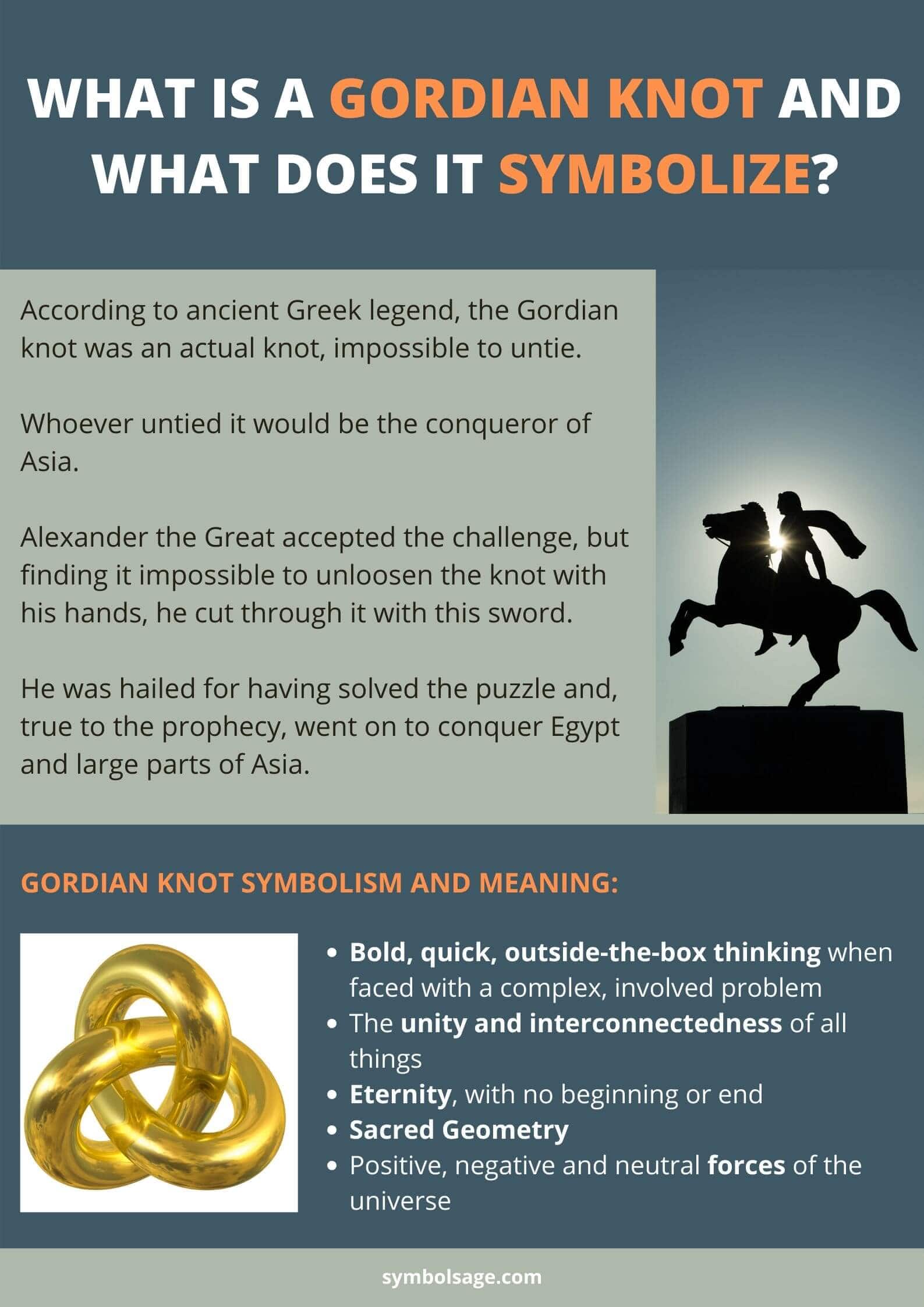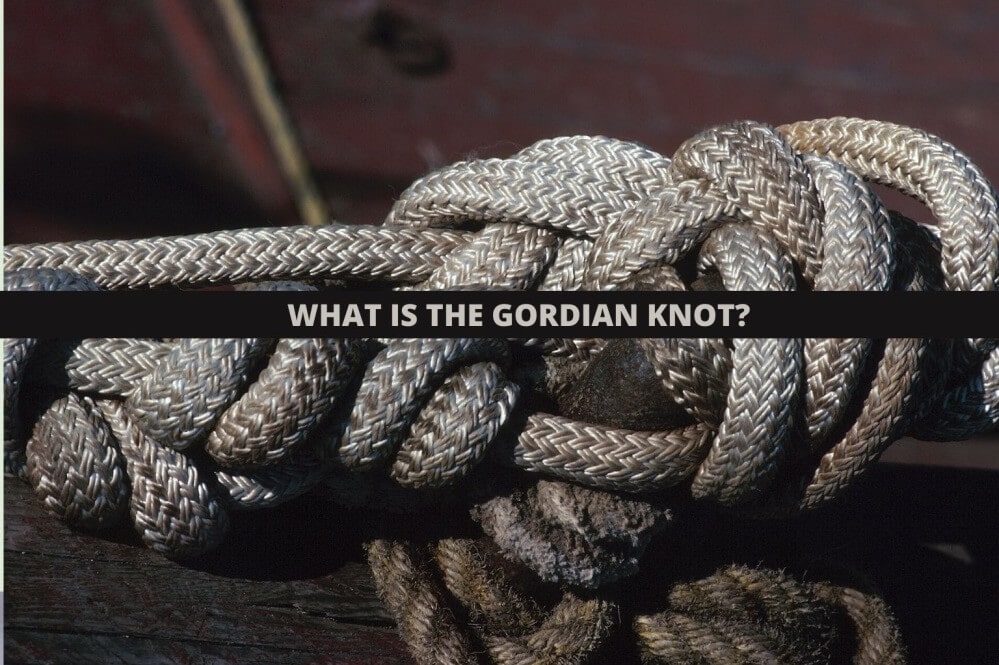
Table of Contents
Although we use the term Gordian knot to refer to complex and unsolvable problems, according to ancient Greek legend, the Gordian knot was an actual knot known for being impossible to untie. Here’s the story behind the term and the symbolism it carries today.
Legend of the Gordian Knot
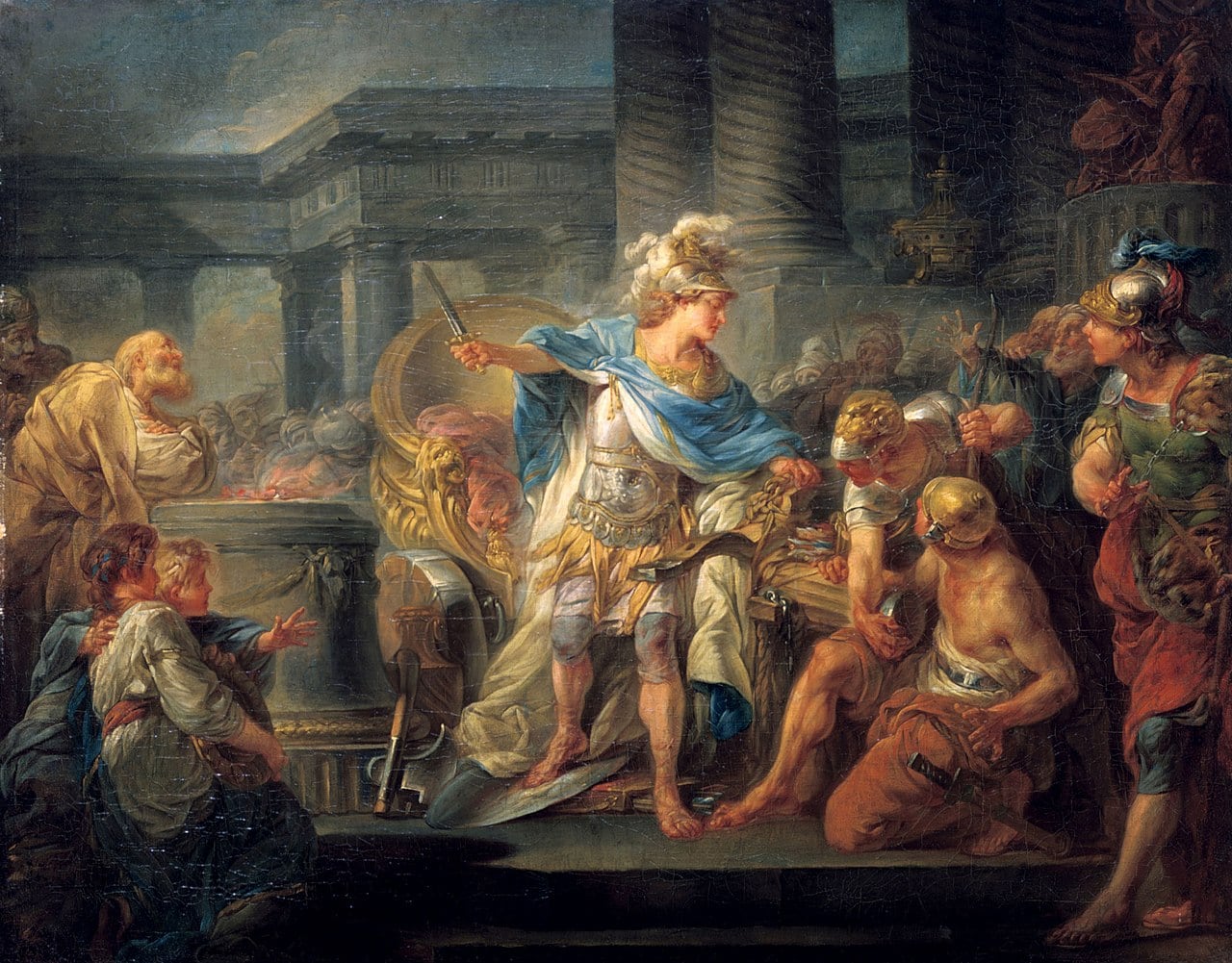
The Gordian Knot is a legend from ancient Greek mythology that refers to a complex knot tied by King Gordius of Phrygia. The knot was said to be extremely intricate, and an oracle prophesied that whoever could untie the knot would become the ruler of Asia.
In 333 B.C, Alexander the Great marched to Gordium, the capital of Phrygia (part of modern-day Turkey). There he found the chariot of Gordius, the founder of the city, with the yoke of the chariot tied to a pole by an elaborate and involved knot, with no visible ends. This knot was believed to be impossible to untie by human hands.
It was believed that whoever was able to loosen the knot would go on to conquer Asia. Many had tried and failed to untie the knot.
Legend has it that Alexander, never one to walk away from a challenge, immediately desired to undo the Gordian knot. When his initial efforts at untying the knot failed, Alexander decided that the problem needed a more creative solution.
“What’s important is not how the knot is loosened but that the knot is removed.”
Saying this, he took out his sword and slashed through the knot. The ropes fell loose and the problem of the Gordian knot was solved.
Alexander was hailed as having solved the ancient problem and, as per the prophecy, he eventually went on to conquer Egypt and many parts of Asia before his untimely death at the age of 32.
Meaning and Symbolism of the Gordian Knot
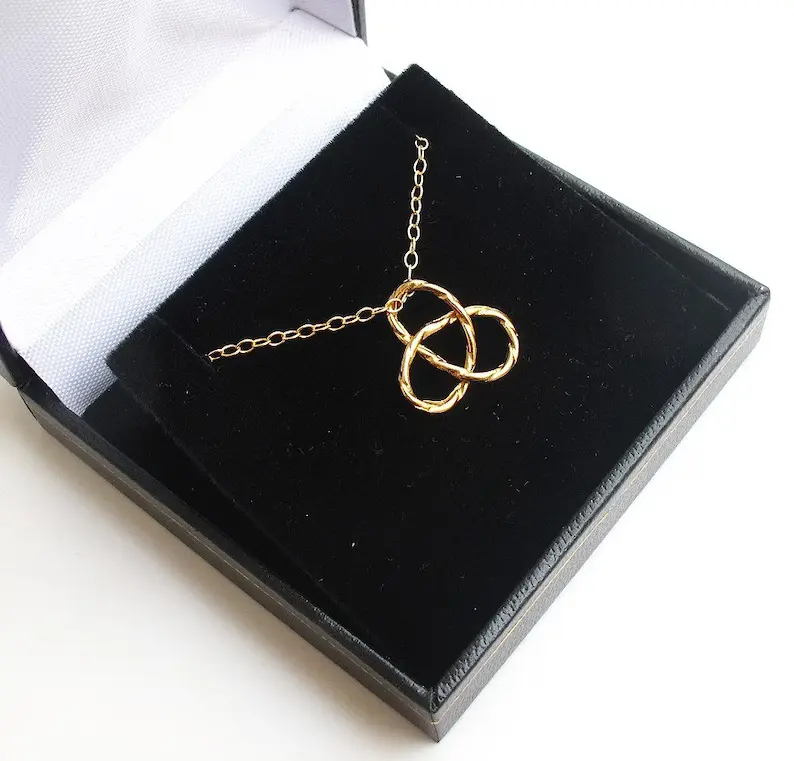
The symbol that represents the Gordian knot features three interlocked oval shapes with no end or beginning, much like the infinity symbol. While there are several variations, this is the most common representation. As the Gordian knot stems from legend, we don’t really know how the ‘original’ knot looked.
In any case, the Gordian knot as a metaphor represents the following aspects:
- Creative Thinking: The knot represents out-of-the-box thinking and confident and decisive action when solving a difficult and involved problem. As such, it’s a symbol of creativity, confidence and the overcoming of adversity.
- Unity: The shape symbolizes the idea of unity and the connectedness of everything in the universe.
- The Holy Trinity: The three interlocked ovals are said to represent the Holy Trinity of the Christian Church, as they are one and yet separate.
- Three Forces: The ovals represent positive, negative and neutral forces found in the universe.
- Eternity: There is no beginning or end to this shape, which makes it a symbol of eternity.
- Sacred Geometry: This refers to sacred meanings being ascribed to certain geometric shapes. The Gordian knot is considered to be sacred geometry, imbued with meaning and symbolism.
What Did the Gordian Knot Look Like?
We don’t really know what the knot looked like because the ancient sources never clearly described what made the knot so intricate and difficult to undo.
All the sources agree that the knot was complex and intricate, with its beginning and ending hard to find. Most artistic representations feature the Gordian knot as a tangled, complex mess of a knot. Because there’s no definite representation of the knot, artists have the license to depict it with freedom. This is why there are many versions of the Gordian knot’s appearance.
Variations to the Myth – Roman Version
In Roman mythology, there is a variation of the Gordian Knot story that involves a different individual named Gordius. According to this version, Gordius was a humble farmer who became king of Phrygia after an oracle predicted that the next person to enter the city in an ox cart would become its ruler.
To symbolize his ascension to the throne, Gordius dedicated his ox cart to the gods by tying it with an intricate knot that it was impossible to unravel by conventional means.
However, unlike the Greek version of Alexander the Great being the one to solve the knot, it is Alexander’s general, Julius Caesar, who encounters the Gordian Knot during his campaigns in Asia Minor. Instead of attempting to untie the knot, Caesar reportedly cleverly circumvents the problem by slicing through it with his sword, thus “untying” the knot in an unconventional and decisive manner.
This Roman version of the Gordian Knot emphasizes the association with Julius Caesar and his bold and audacious approach to problem-solving. It highlights Caesar’s willingness to take unconventional actions to achieve his goals, a characteristic that parallels the legend of Alexander the Great cutting the knot in the Greek version of the story.
Gordian Knot as an English Metaphor
In terms of being used as a figure of speech, the phrase the Gordian knot is used to describe an extremely difficult and complex problem that can be solved only by decisive and bold action. It’s often used in sentences as follows:
- He forged through the Gordian knot of research papers during his doctoral studies.
- The scientists cut the long-standing Gordian knot of DNA testing.
- Let’s find a way to cut this Gordian knot or we’re going to be in trouble with the manager.
Gordian Knot and King Arthur’s Sword as Metaphors
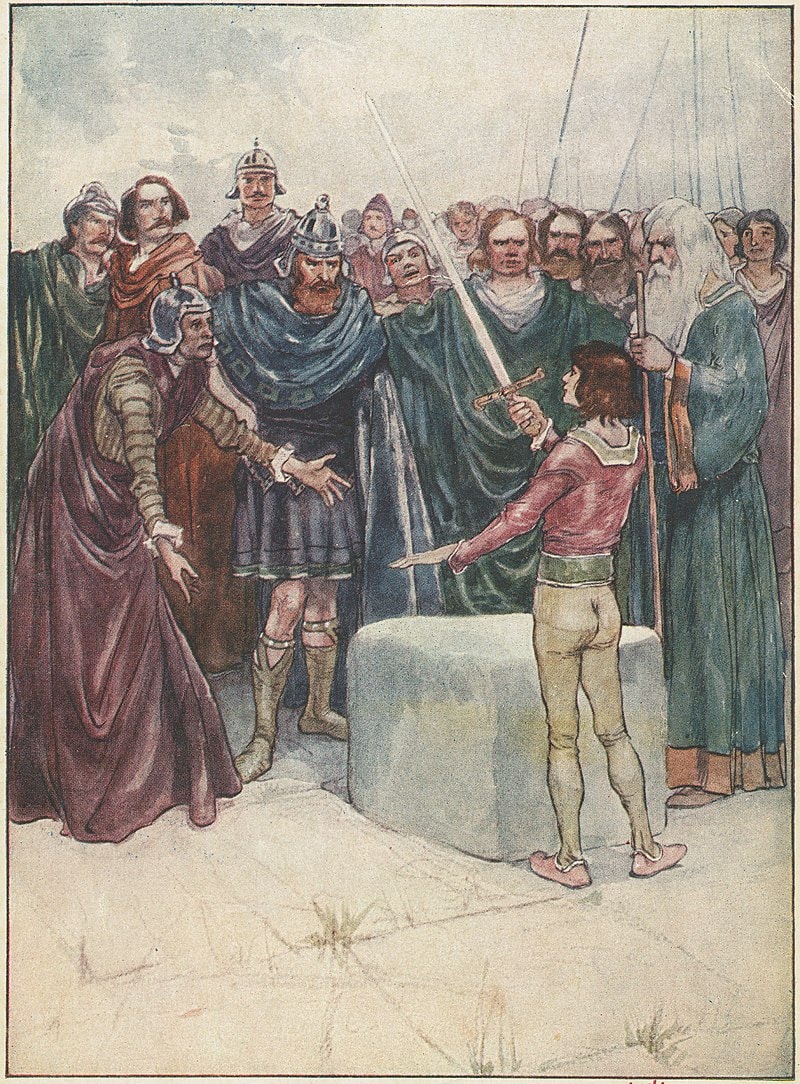
The legend of the Gordian Knot reminds us of the legend of King Arthur’s sword, Excalibur. While both are from different legends and historical contexts, there is a similarity in these legends.
An impossible, almost superhuman task that’s undertaken by someone destined for greatness and future leadership, both Alexander and King Arthur would go on to lead their countries to victory. But that’s as far as the similarities go.
The Gordian Knot, as mentioned earlier, is a knot tied by King Gordius of Phrygia in Greek mythology. It was an intricate and complex knot that was impossible to untie using conventional means. Alexander is said to have cut through the knot with his sword, thus “solving” the problem.
On the other hand, Excalibur is a legendary sword associated with King Arthur, the legendary king of Britain from medieval folklore. According to Arthurian legends, Excalibur was a remarkable and magical sword, often depicted as being bestowed upon Arthur by the Lady of the Lake. It was said to possess extraordinary powers, representing Arthur’s rightful claim to the throne and serving as a symbol of his sovereignty and leadership.
While the Gordian Knot represents a complex problem or dilemma that requires a bold and unconventional solution, Excalibur symbolizes the nobility, power, and legitimacy of King Arthur’s rule. The two symbols come from different mythological and historical traditions and serve different metaphorical purposes.
Gordian Knot Jewelry and Fashion
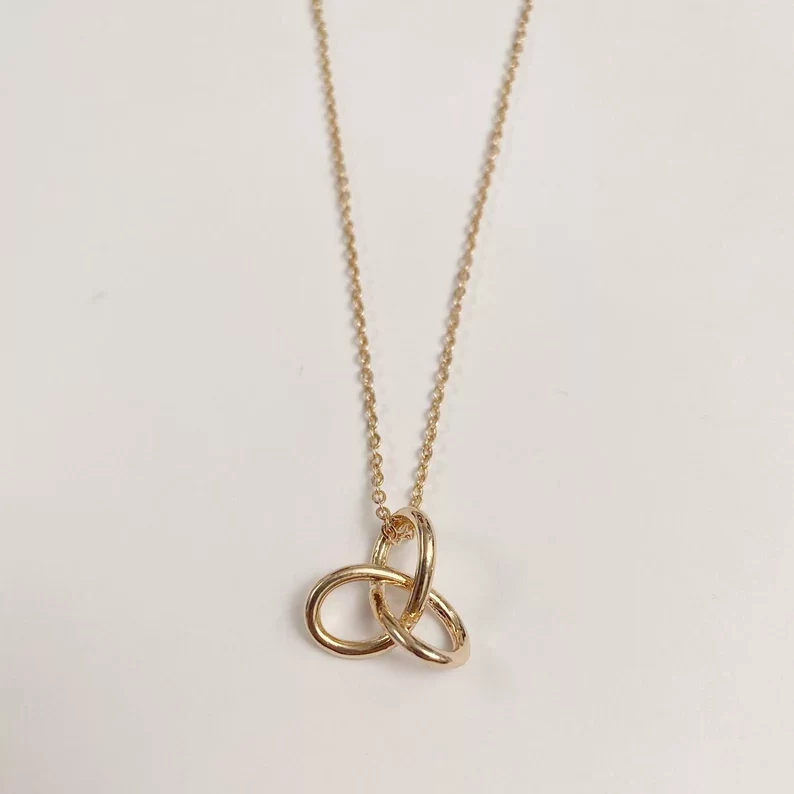
Because of its meaning and symmetrical shape, the Gordian knot is frequently used in jewelry and fashion. It’s a popular design for pendants, earrings, and charms. It’s also frequently used in tattoo designs, with many variations to the pattern. Gordian knot patterns are also used on decorative items, such as carpets, wall hangings and clothes.
Wrapping Up
The Gordian knot has become a popular phrase and symbol in our lexicon, jewelry and fashion today, with origins that can be traced back to ancient times. The symbol has several meanings and variations, but the main representations are eternity, unity, creativity and overcoming adversity.
To learn more about knot related symbols, check out our articles on Celtic knots, the endless knot and true lover’s knot.
